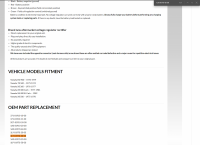Hey all,
Wanting to learn about a regulator in this bike. One that is separate from the rectifier. It appears to lead to the field coil on the alternator, but then at the connector it appears green from the regulator is actually ground as it become black to the coil and the field coil is tied into a wire at the fuse box. Its very confusing to me what this regulator does. is it to keep the field coil at a safe 12v? It certainly isn't regulating the whole system based off this diagram, is it?
If it is, could I just remove it when I put in my replacement reg/rect unit? I am replacing electrical components of this due to its age. I want to modernize it a little. I have an advancer unit and an XS-Charge unit on the way to replace the ignition system. That way I don't have to rely on the proprietary igniter unit.

Wanting to learn about a regulator in this bike. One that is separate from the rectifier. It appears to lead to the field coil on the alternator, but then at the connector it appears green from the regulator is actually ground as it become black to the coil and the field coil is tied into a wire at the fuse box. Its very confusing to me what this regulator does. is it to keep the field coil at a safe 12v? It certainly isn't regulating the whole system based off this diagram, is it?
If it is, could I just remove it when I put in my replacement reg/rect unit? I am replacing electrical components of this due to its age. I want to modernize it a little. I have an advancer unit and an XS-Charge unit on the way to replace the ignition system. That way I don't have to rely on the proprietary igniter unit.

